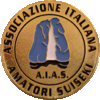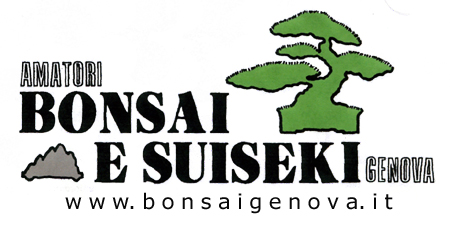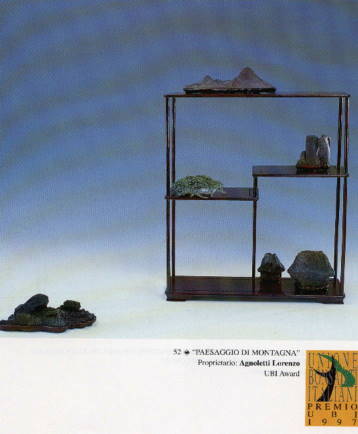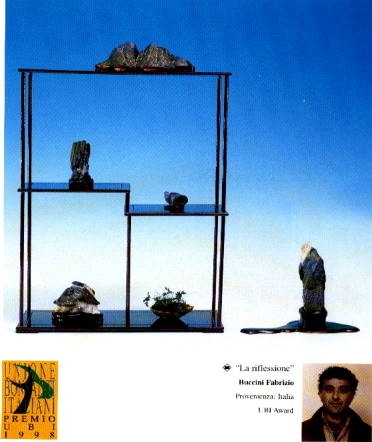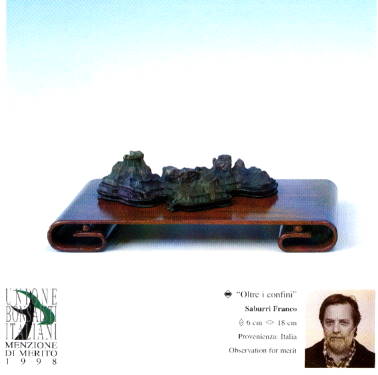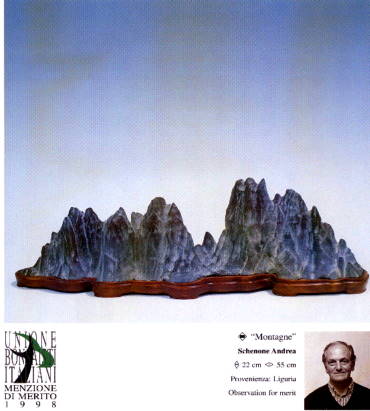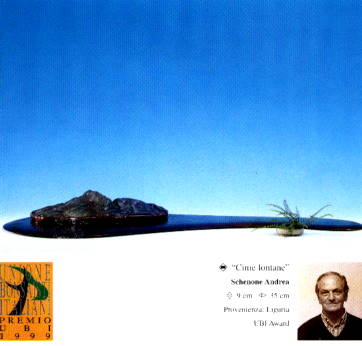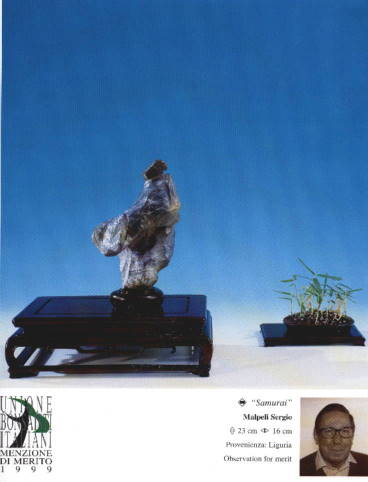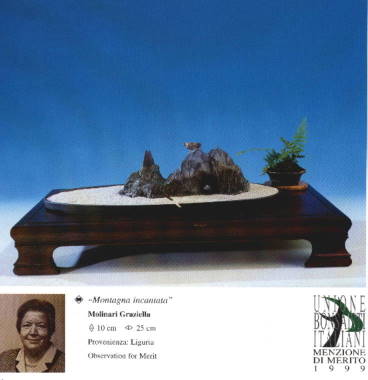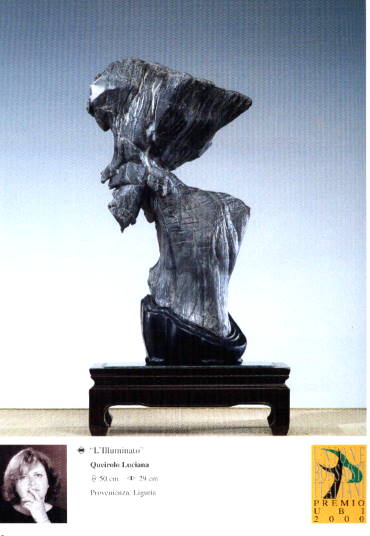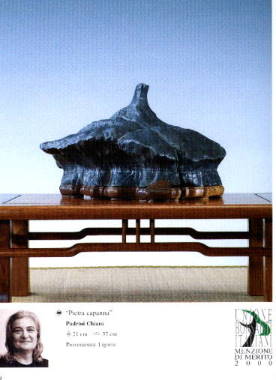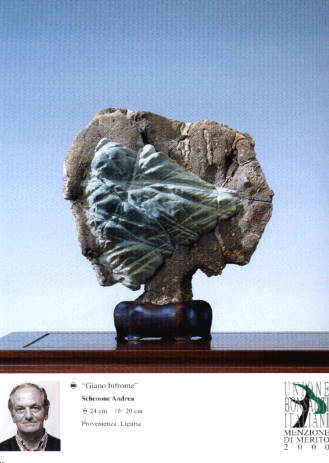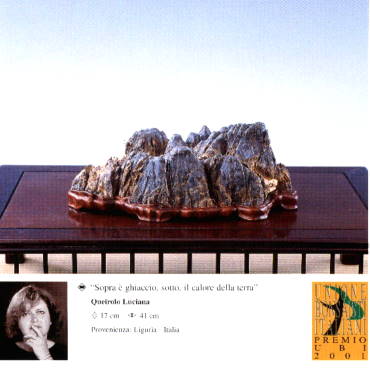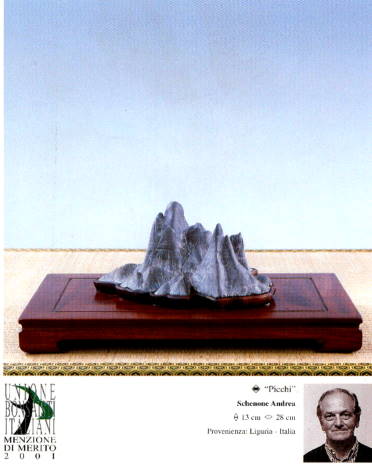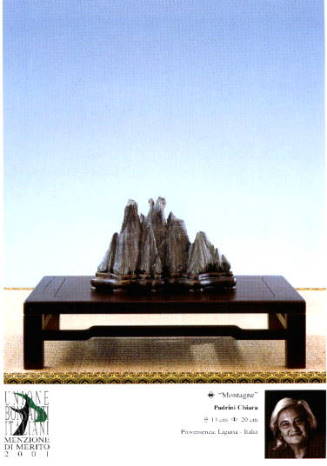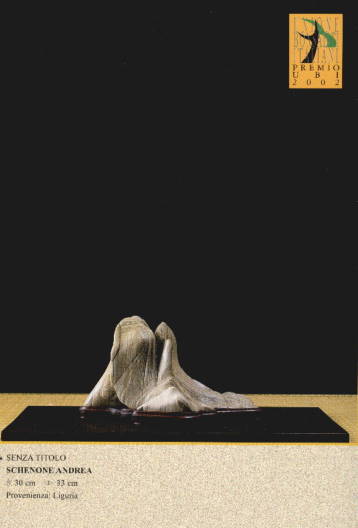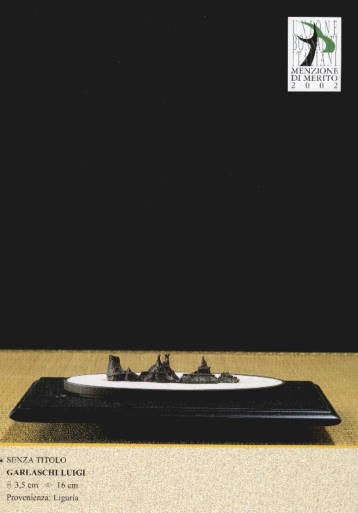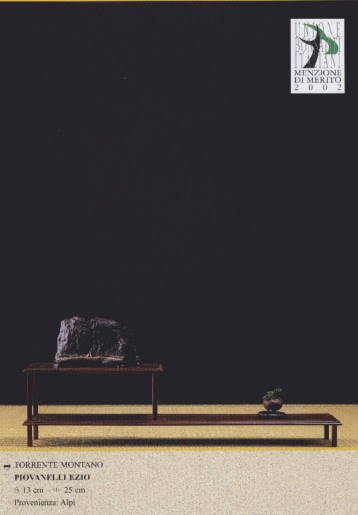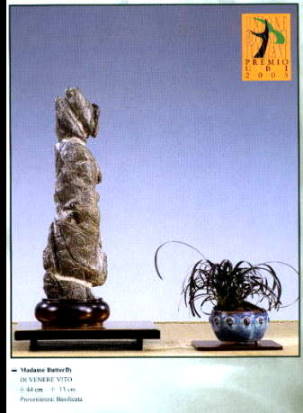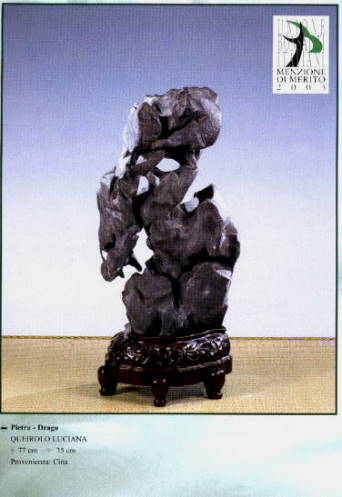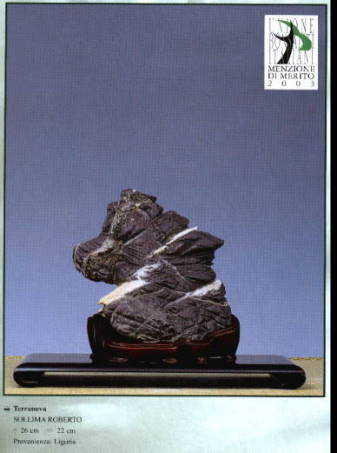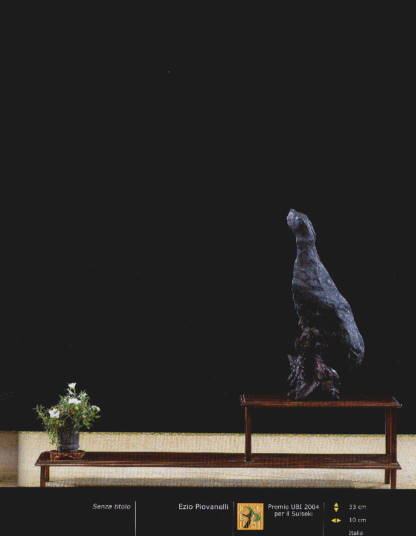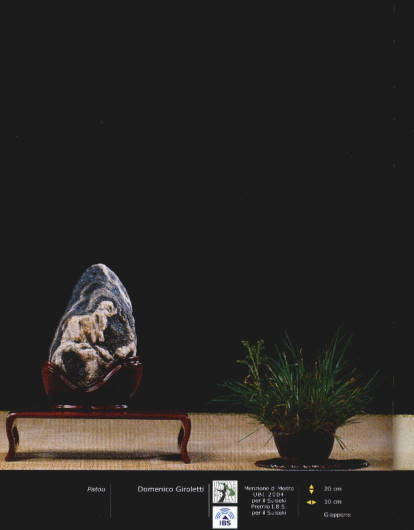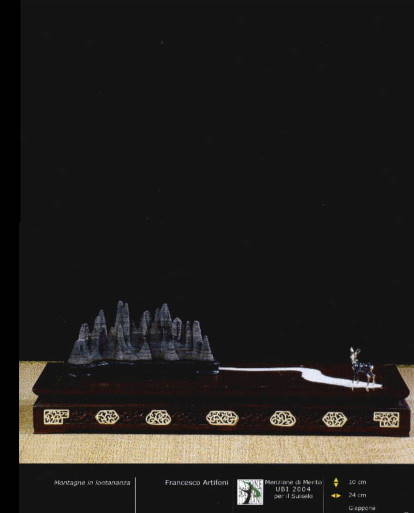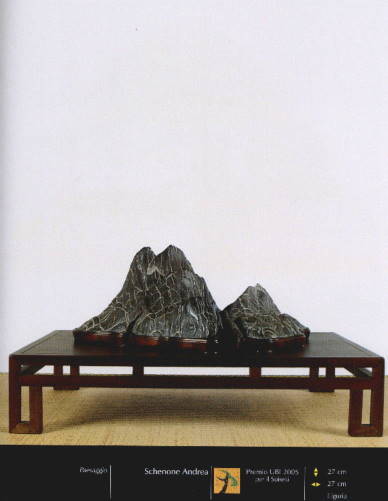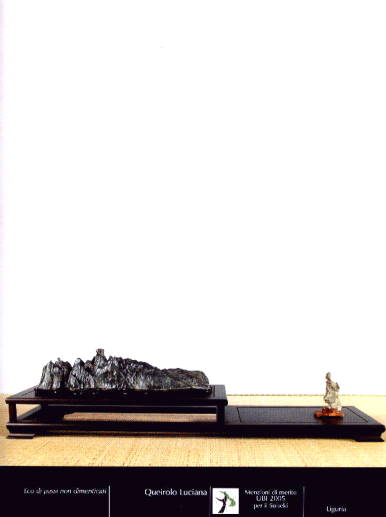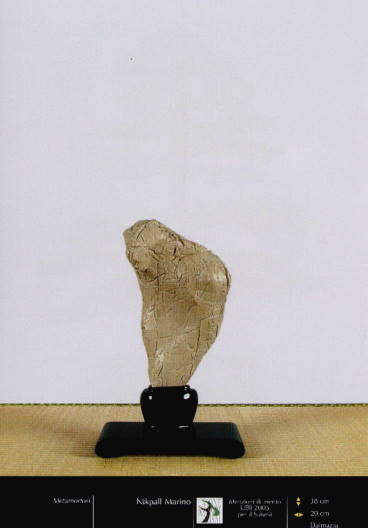|
all'installazione dei cookie di ShinyStat modificare opportunamente le impostazioni del proprio browser o cliccare sull'apposito link
|
Associations and Clubs
Hefei Water Stone Association
|
Title : Hefei Water Stone Association
Address : http://www.hfssxh.com/
Language : Chinese
|
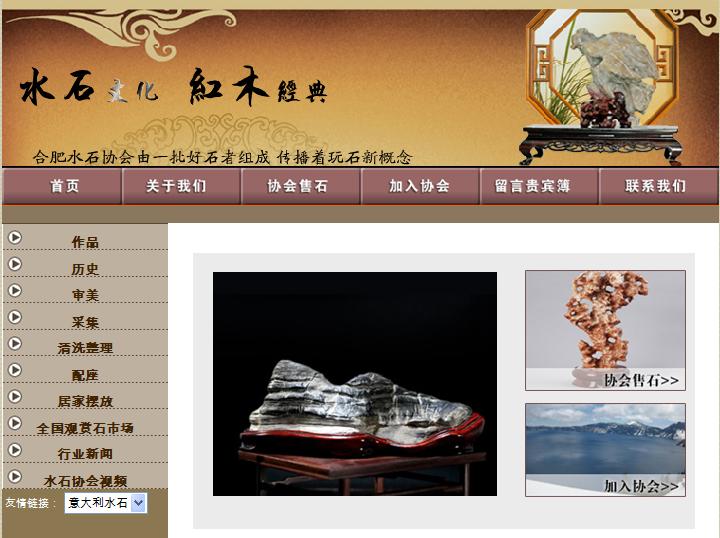 |
||
|
A Chinese website for to learn more about traditional Chinese art of appreciation of the stones to go through Google translator and a little patience. |
|||
|
Managed by Mr. Wang Jun, Hefei Stone Water Association's member, the site offers pictures of the types belonging to the most classical Chinese tradition, and some pages about the history, aesthetics and the acquisition and cleaning of the stones.
|
|||
Yangtze River Stones
|
Title : Yangtze River Stones
Address : http://www.ystones.com/
Language: English / Korean
|
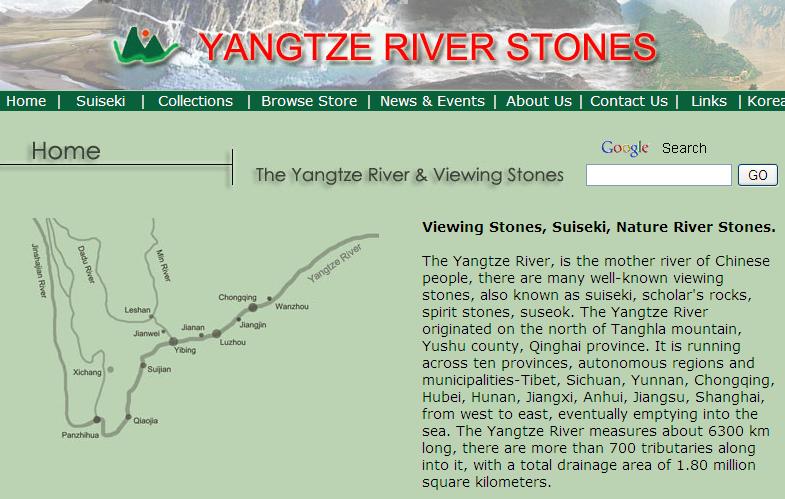 |
|
|
This website is devoted to as a window to promote and show viewing stones of the Yangtze River, called by the Chinese people simply jiang ( "River"), while in the West is known as "Blue River".
Managed by the 'Yangtze River Viewing Stone International Intercourse Institute' (YRVI), the website takes the visitor on a thorough knowledge of the environment and the various types of stones that the river, in its course of 6300 km, gives to man, through a series of educational articles and beautiful pictures.
|
||
Scuola Bonsai del Mediterraneo
|
Titolo : S.B.M. The Italian Bonsai Styles Indirizzo : http://www.scuolabonsaimediterranea.it Lingua : Italiano |
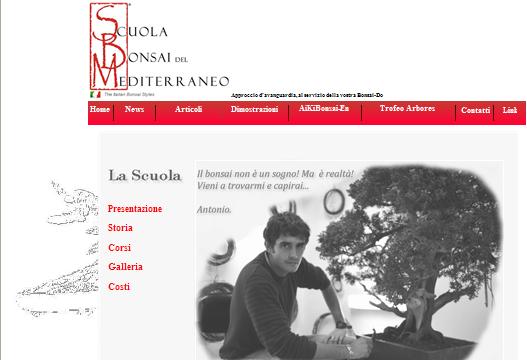 |
||
|
Il Sito Ufficiale della Scuola Bonsai del Mediterraneo, "nata da una idea e dal sogno del suo direttore didattico Antonio Gesualdi, nel gennaio 2008, come studio-scuola-giardino d'arte e cultura bonsaistica, mirato alla creazione e valorizzazione di bonsai di pregio, e alla divulgazione dell'Arte bonsai, con i metodi sia tecnici che didattici più avanzati in questo campo, affiancate dalla competenza in campo artistico e agronomico del Sig. Gesualdi" . |
|||
 |
La Scuola Bonsai del Mediterraneo è un uno studio-scuola-giardino, dove fare bonsai nella più totale rilassatezza e con l'uso dei più moderni ausili tecnico-artistici applicati a questa fantastica arte. Con il metodo più classico e diretto per apprendere l'Arte Bonsai, e cioè con l'opportunità di lavorare a tu per tu con l'istruttore. |
||
|
Aperta a tutti coloro che voglio avvicinarsi al mondo dei piccoli alberi o che volessero approfondire o ampliare la propria visione di quest'arte millenaria.
Chiunque può frequentare i corsi della S.B.M.: dal neo appassionato che verrà seguito sin dall'inizio nella sua formazione, al bonsaista più avanzato, che potrà contare sull'ausilio di esperti formatesi a contatto con i più rinomati maestri in Italia e in Giappone, per offrire quanto di meglio c'è per un bonsaismo di Qualità.
|
|||
Bonsai and Suiseki Lovers of Genoa
|
Title : Amatori Bonsai e Suiseki di Genova Address : http://www.bonsaigenova.it/ Language : Italian |
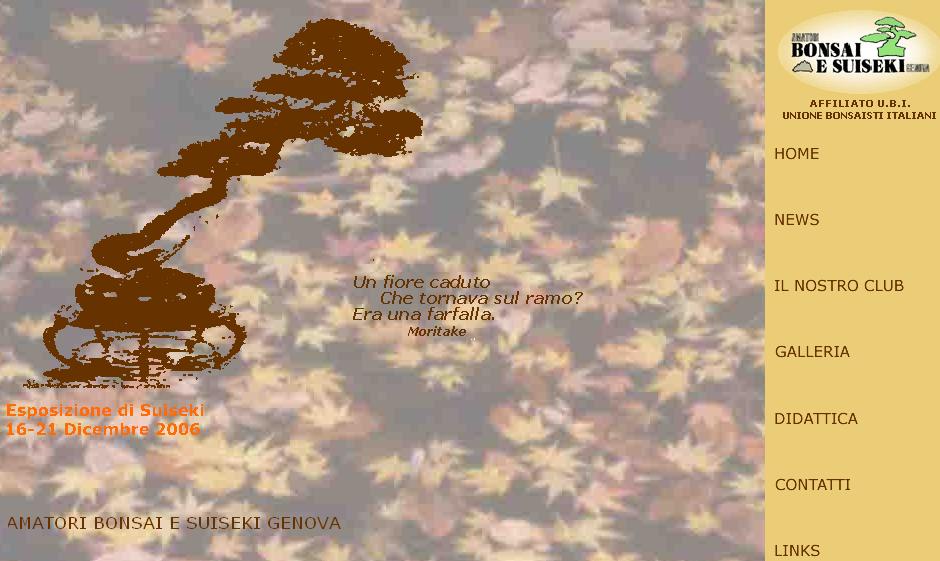 |
||
|
The Official site of the Club “Bonsai and Suiseki Lovers of Genoa”: the story and the activities of the Club , bonsai and suiseki images and a section dedicated to didactics |
|||
| The club “Bonsai and Suiseki Lovers of Genoa” | |
|
|
The Club “Bonsai Lovers of Genoa” was founded in 1987 in order to gather the enthusiasts of this art in the urban area of this town. The activity of the Association consisted in holding meetings with bimonthly recurrence , in organizing exhibitions locally, and teaching activity also with experts of national standard. |
|
With the entry of some suiseki enthusiasts’ in the ’90, among which Mr.Sergio Malpeli who has been President for long time , the Association became “Bonsai and Suiseki Lovers of Genoa “ and, thanks to the numerical and qualitative increase of members , has had an impulse which has allowed to raise the activity level: participations to important national events, in which some members have also been awarded , and organization of seminars for the members with well known Masters, culminating in an organized meeting series with Mr.Othmar Auer. Since the 2005 year , thanks to the starting of the internet web site and to proposal of bonsai diffusion’s projects, which have allowed to enjoy a contribution of the Genoa Province , the number of members has increased and impressive exhibitions have been realized with the cooperation of Ligurian Bonsai Associations and Offices such the Botanical Garden, the Villa Serra Consortium , the Club “Gado” of Osaka and Mr. Giovanni Genotti. In the 2007 year , for the twentieth anniversary of the Club, an important event is scheduled for September which will include also the XII IBS Congress and an exhibition of the Ligurian Clubs , with the presence of Bokushin, an handwriting school directed by Mr. Norio Nagayama. |
|
A.B.T. Amatori Bonsai Trieste
|
Title : A.B.T. Amatori Bonsai Trieste Address : http://www.bonsaitrieste.it/ Language : Italian |
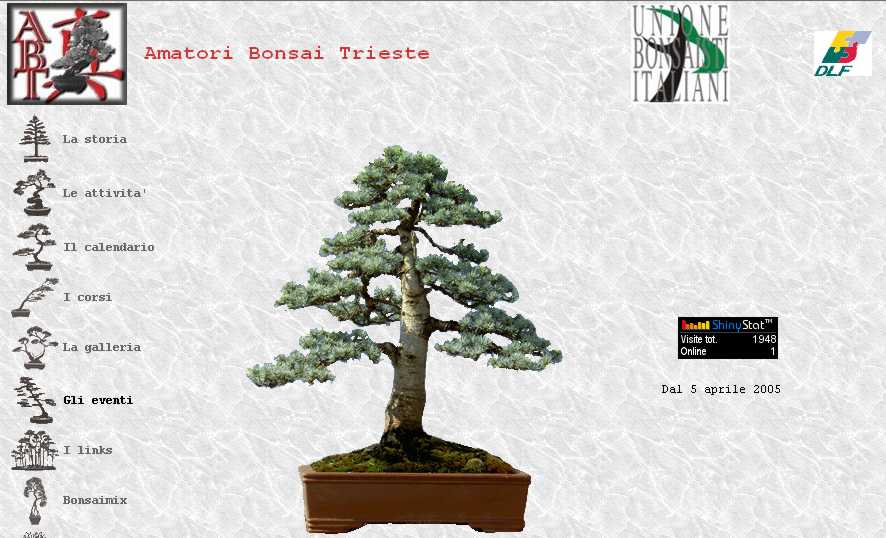 |
|
|
The official website of the A.B.T. , the Amatori Bonsai Trieste : includes the club's activities, pictures, experiences and a section devoted to the suiseki of the member Mr. Silvio Pianigiani. |
||
Bonsai in Asia Guide Book
|
Title : Bonsai in Asia Guide Book Address : http://www.bonsai-in-asia.com/ Language : English |
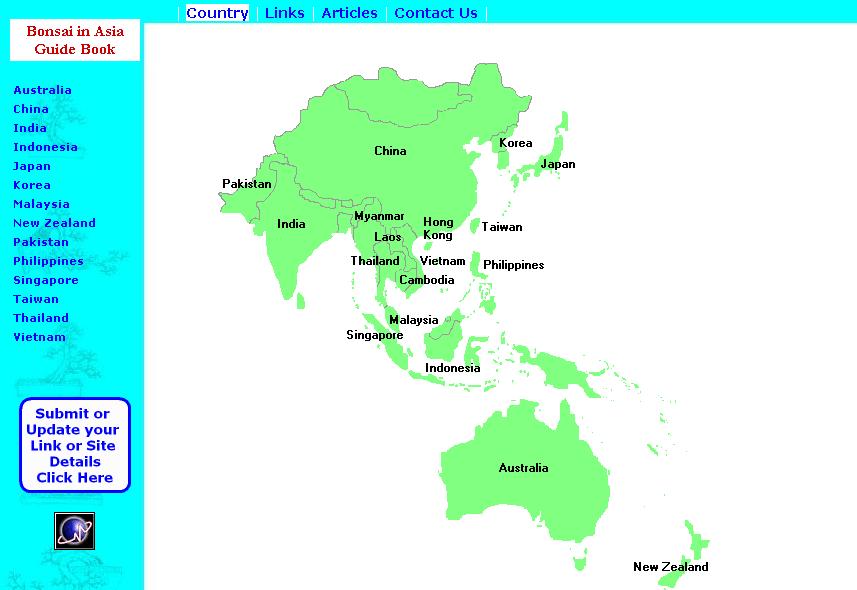 |
|
|
All about Bonsai & Suiseki in
Skimming through his pages, virtual trip between the Oriental gardens, Exposures, Museums, Associations, Nurserys, Shoppings. Articles; contacts with the Bonsai in Japanese Website Links; European Bonsai Links; United Kingdom Bonsai Links; South American Links; Other Bonsai Links Non Country Specific; USA Links |
||
I.B.S. Collegio Nazionale Istruttori del Bonsai e del Suiseki
|
Title : I.B.S.
Address : http://www.collegioibs.it/
Language : Italian
|
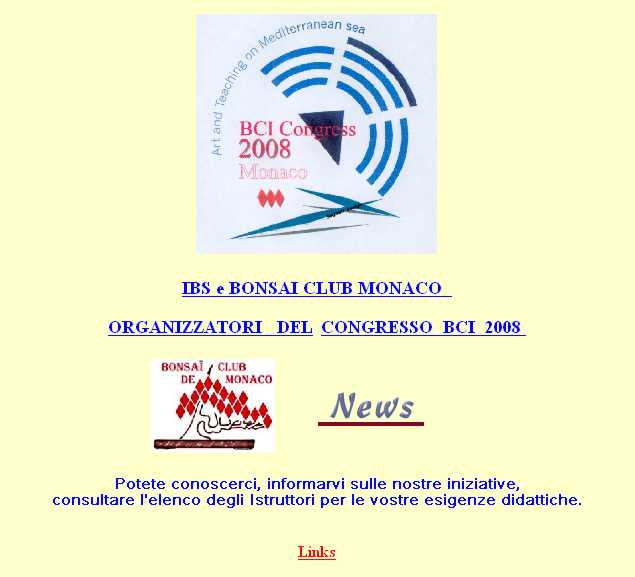 |
|
|
The official site of the National College of Bonsai and Suiseki Instructors. It contains the story of the Association, the description of these disciplines, the organized Congress, the presentation of the courses, the list of the Instructors.
|
||
U.B.I. Unione Bonsaisti Italiani Associations and Clubs
|
Title : Unione Bonsaisti Italiani
Address : http://www.ubibonsai.it/
Language : Italian
|
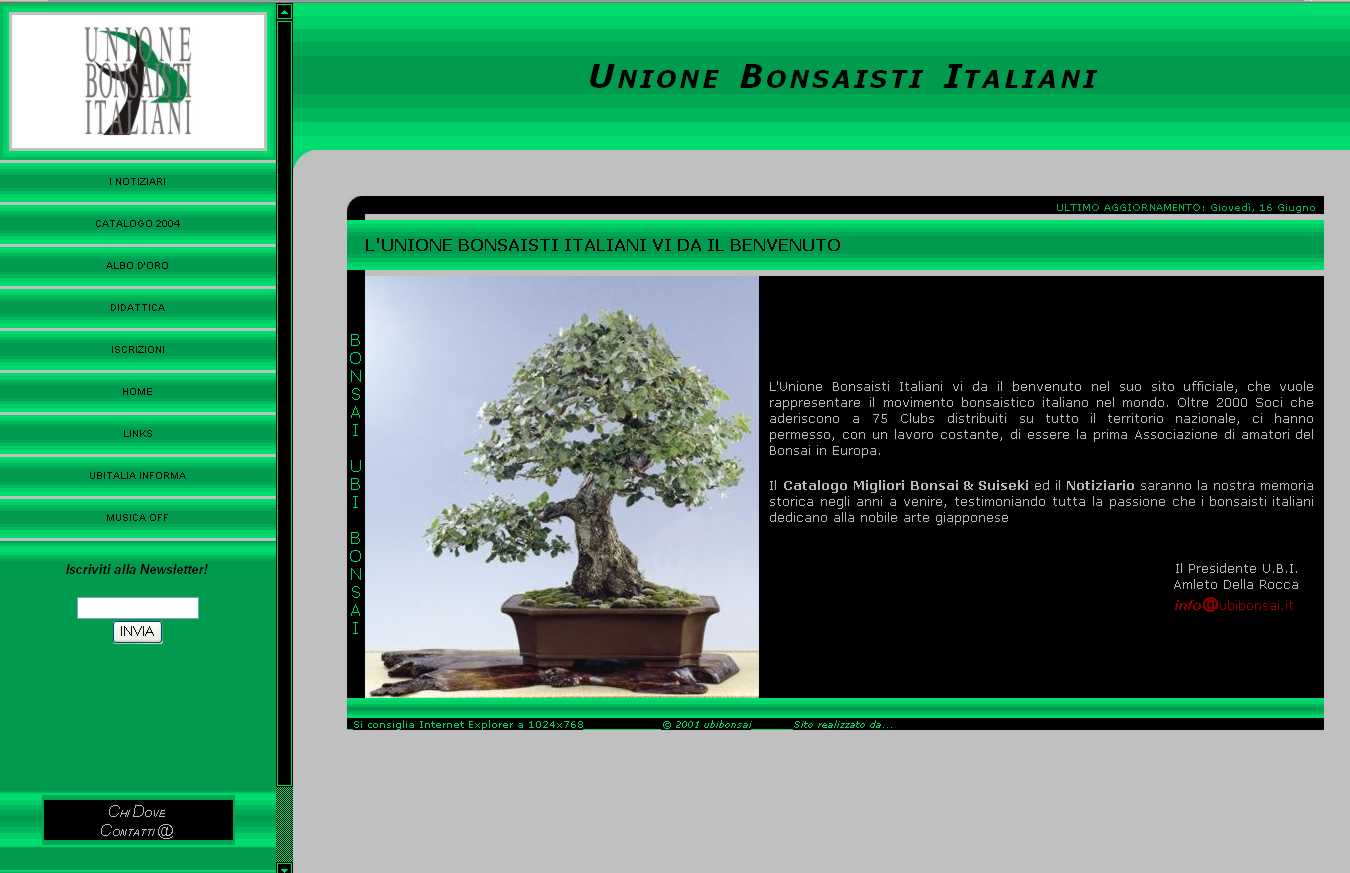 |
|
|
The official site of the U.B.I., the Unione Bonsaisti Italiani: some articles on line drawn from the Newsletters, from the Golden Album and from a section leased to didactics.
|
||
|
The U.B.I.
|
||
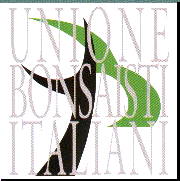 The U.B.I. , Unione Bonsaisti Italiani, represents the italian bonsai movement in the world. Over 2000 members , 77 supporting Clubs, have allowed to the UBI to be the first Association of Bonsai Lovers in Europe . Founded in Imola in the 1995 , the UBI was born on enterprise of the persons in charge of the three previous National Associations gathered together in a sole Association, with the aim to let the Italian Bonsai proceed with greater strength. The U.B.I. , Unione Bonsaisti Italiani, represents the italian bonsai movement in the world. Over 2000 members , 77 supporting Clubs, have allowed to the UBI to be the first Association of Bonsai Lovers in Europe . Founded in Imola in the 1995 , the UBI was born on enterprise of the persons in charge of the three previous National Associations gathered together in a sole Association, with the aim to let the Italian Bonsai proceed with greater strength.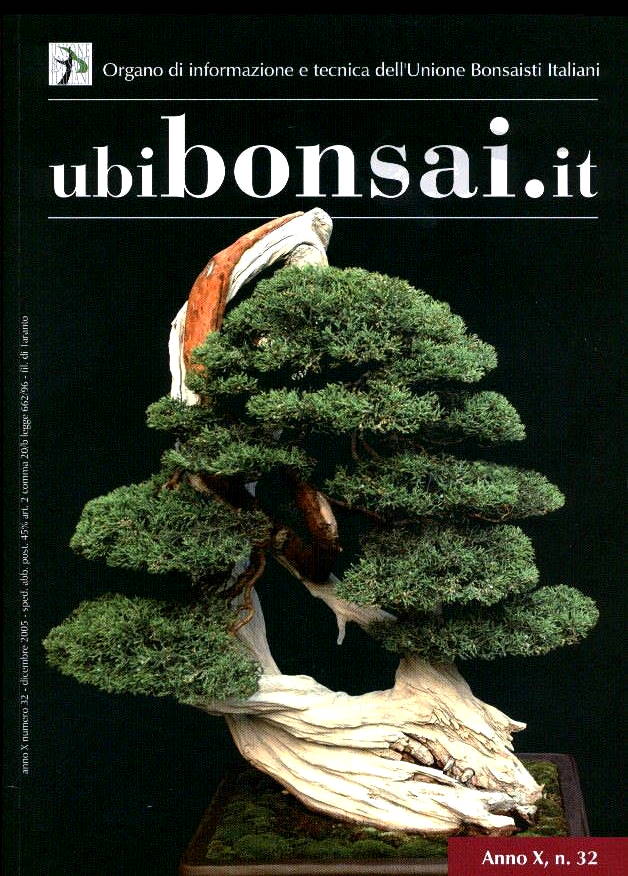 The first Newsletter number came out in the 1996, a publication created with the purpose to establish a direct communication with own members , free of any editorial dependence.
The UBI Newsletter does not only pass news to own members , but aspires on winning ideas and on articles based on the experiences of Italian Bonsai Lovers on autochthonous plants.
It was the Newsletter to open the way to the UBI Catalogue of Best Bonsai and Suiseki. On the No.3 in March 1997 it was advertised with greatest relief the First UBI National Congress, which was held in Imola on May 16th-17th-18th 1997 and the 1st UBI CATALOGUE OF BEST BONSAI & SUISEKI, a publication of great prestige distributed freely among members and mailed to the highest world authorities of Bonsai and Suiseki.
The 2006 Catalogue will be a special edition of the Decennial.
The Catalogue and the Newsletter will be our historical memory in the years to come, testifying all the passion which the Italian Bonsai Lovers devote to the noble Japanese art.
|
||
|
From the Golden Catalogue : the suiseki awarded by UBI
|
A.T.A.B.S. Tuscanian Association Bonsai and Suiseki Apreciation
|
Title : A.T.A.B.S.
Internet Address : http://www.bonsaifirenze.com
Language : Italian
|
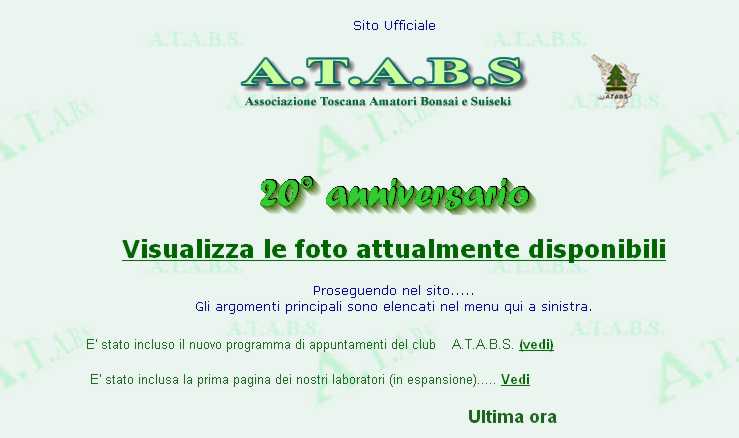 |
|
|
The official website of the Tuscanian Association Bonsai and Suiseki Apreciation : includes the club's activities, practical suggestions, cards of cultivation, pictures, experiences and a section devoted to the suiseki.
|
||
|
The A.T.A.B.S. - Tuscanian Association Bonsai and Suiseki Apreciation
|
||
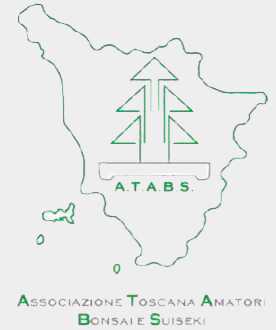 Was Gianfranco Giorgi, Boni Helium, Lorenzo Agnoletti and Umberto Margiacchi, (this last one invited in the final phase) to decide the constitution in 1985 of regional association A.T.A.B.S. to the A.I.B. (Italian Association Bonsai). After the presidency of Gianfranco Giorgi, they are alternates Elio Boni, Paola Gramigni, Massimo Martini and, currently, Sergio Bassi. "A supremacy to which we hold in particular way is that our association from its birth has studied also suiseki. We don't know if since 1985 totally aware choice were one. In fact, the only book of Bonsai then available on the market (the mythical Kenji Murata) hardly spoke about stones evoking landscapes, mountains or islands; however it is an incontrovertible data that some "pebble" always has appeared since ours first exposures. This "supremacy in the name" doesn't want sure to make to come "a de facto supremacy " that after some year brought the Unici di Liguria association to become a suiseki association.
By now from some year, currently in our exposures a specific section dedicated to this particular artistic expression regularly appears. We want to emphasize the main data that represents the role of the association: the great increase of the "medium associate". He has acquired more security in the own abilities, is matured in the taste and in the search of particulars. By now, from some year, the preparation are not improvised but studied in details and guided with sure hand from the more expert associates.
The attention to the Japanese and Chinese culture, never has not been lived like a limit but like an opportunity, with the respect that is right to attribute to the master, without that this means a total cancellation of the own personality."
|
||
|
Suiseki : Viewing stones, and much more
|
||
|
of Sergio Bassi, president of 'A.T.A.B.S.
|
||
|
The atavic tie between man and stones.
Since the man appeared on the earth he has had need stones.
He used them like weapons, like hardware, in order to construct a shelter and in other infinite of ways.
The Suiseki is represented of small dimensioned stones, naturally created.
The evocative power of the suiseki has the ability to evoke insight us images and memories : seen or lived experiences.
A moving stone dismantles our indifference, using also a single point of its force (revealing itself through its shape, color, superficial texture, patina) or, taking advantage itself of all these properties.
Probably the "contemplation and worship of stones" have had origin 2000 years ago in , where small stones where placed on the altars in order to represent islands, legendary mountains, associated to the buddhist or taoiste sideboards.
In the VI° century d.C. some of these stones arrived in
The Japanese adapted this philosophy to their creeds; in recent age, they have created a classification evolved in a continuous update; furthermore they have disclosed this art all over the world, since the enthusiasts are hundred of thousands.
Traditionally the stone is fixed it in a wooden base or footrest that adapted to the contours of the base, or on very low tray with sand or water.
The Suiseki term is the abbreviation of an ancient more complex phrase: SAN SUI JO KEI SEKI that literally means: STONES REPRESENTING NATURAL SCENES OF STONE AND WATER.
During its first period of development, the Suiseki was appreciated both for the beauty and for its philosophical-religious simbolism.
For the Buddhists, the stone symbolizes the Shumi mountain, the sacred mount that the religion places to the center of the world.
For the Taoists, the stone symbolized Horai, the taoist paradise.
For the believers of the philosophical doctrine of the Ying and the Yang, a stone on a tray with water symbolizes the two fundamental forces of the universe: the stone symbolizes the Yang (hard, solid, sand bank, warmth, strong, shining, rough, penetrating) and the water the Ying (gentle, fleeting, humid, cold, dark, mysterious, weak, passive, delicate, sensitive, receptive).
Out of these considerations, the Suiseki is a kind of art and collecting that deeply it going to root in the appreciation of many western peoples, whether appreciators of Bonsai art or not. The Stone arrives to us through traumatic and disturbing transformations during millenia, assuming so perfect and meaningful shapes, such as to leave us unbeliever and full of admiration.
Important Masters asserts:
"So mankind been born in weakness, than this is for the stone. Adaptations and fights with the surrounding atmosphere have formed it. Those who can communicate with a stone develops love for the nature and ability to accept and to survive to the pressures of the life that model to us. The Suiseki enthusiast stretch to being modest, they love the peace and the nature, w’ere aware that nothing can be obtained without sacrifice. Nobody can brail up, nobody e can lie to itself and it must be able to accep the alea of fate."
(M. Paiman President of Indonesian Suiseki Association)
"A beautiful Suiseki brings the observer not only to appreciate the largeness of Nature, but even to understand that which can be defined as the divine creation of the entire Universe and to comprise the beauty of the naturalness.” (Susumu Sudo)
"A finished Suiseki is a treasure. It has the power to make us to remember events of the past, mountains, forests, rivers, cascades, glaciers, clefts. For someone, as it says also the ancient religion Shinto, the Suiseki in full of spirit and divinity. Part of the mystic and the spirit of the Suiseki is in its permanent and moreover ephemeral qualities.
What makes a Suiseki a sublime shape of art, is the knowledge that the development of the aspect has demanded hundred of million years and that still the stone changes its personality second of as is observed in various circumstances." (Felix G. Rivera - Albany - California -U.S.A.)
"Million of years blows off so that it seems that to us on this land crust, always in eternal movement, thin peel of breach, tangling, deeping, elevation. Our Palombini is fractured, welds, cicatrize with calcite belts, with crystallized quartz veins, and still they sink, still they go back, they emerge here and there, finally! Is a long history as only the history of the world knows to be, in it we live those few time that is given living to us, and not always of this we are aware. This history now I have between my hands and it is that I would want to show you: is not a miracle, is not for alea: is the Creation, is LIFE." (Luciana Queirolo - President of Suiseki Club Unici di Liguria - Italy).
|
||
|
Some stones by the Exibition 2005 |
|
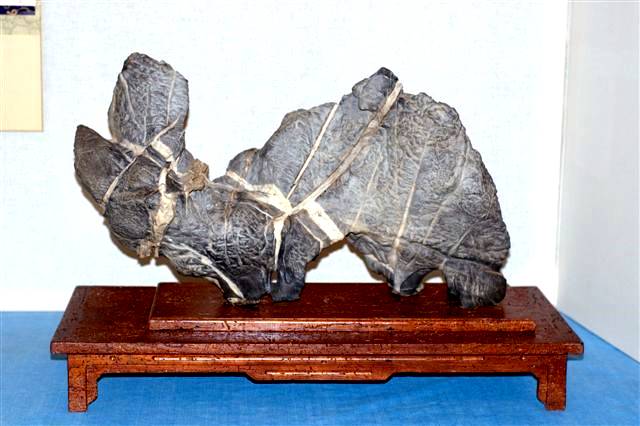 |
|
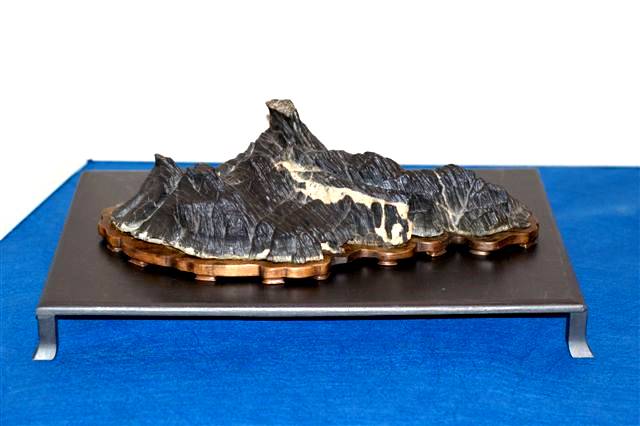 |
|
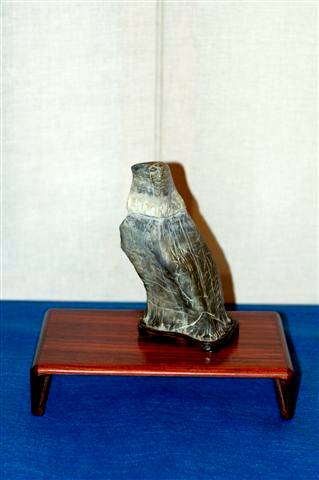 |
|
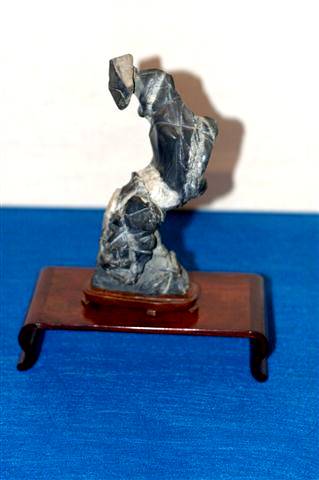 |
|
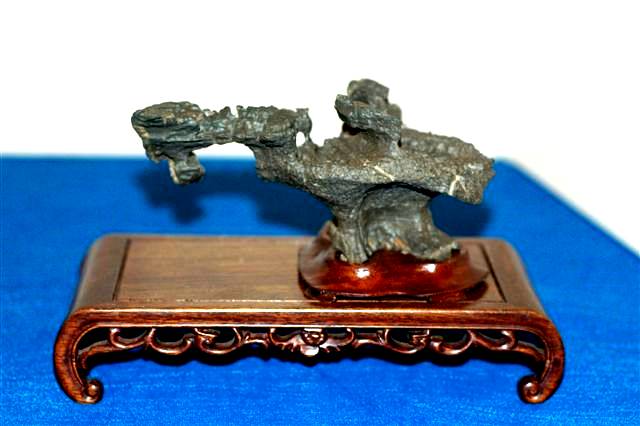 |
|
 |
|
